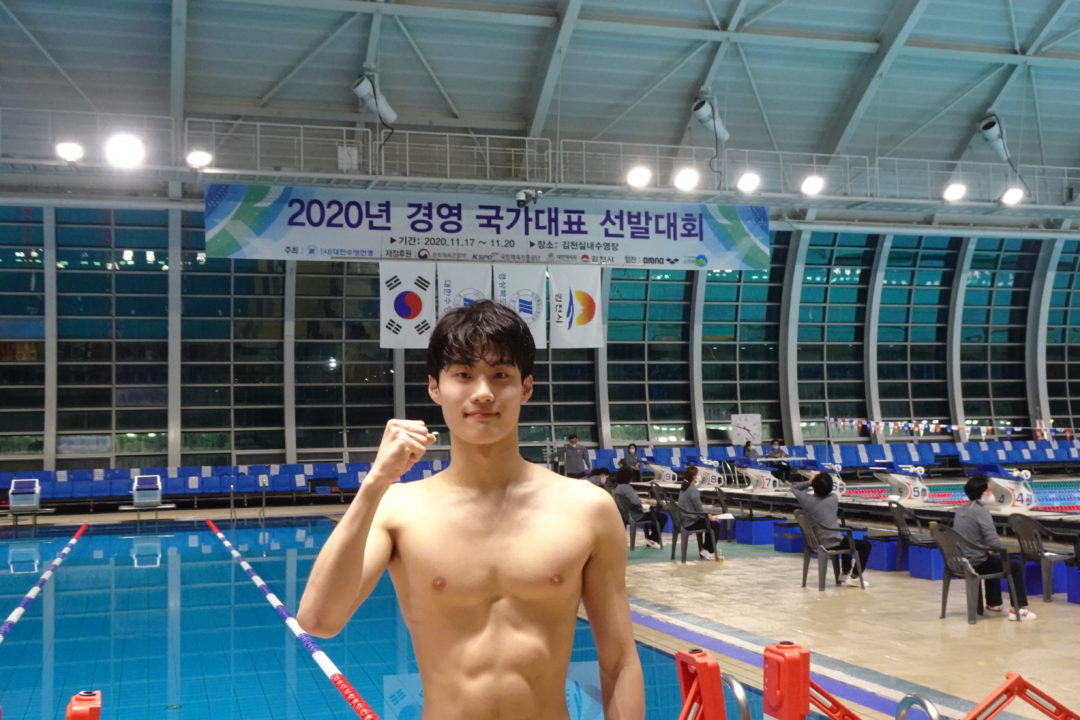In a matter of just days, swimming action will commence at the newly constructed Tokyo Olympic Aquatics Center. The building is one of eight new, permanent venues built in the host city, with swimming, diving and artistic swimming competition taking place in the roughly 705,000 square foot facility.
The pool is the standard size for Olympic competitions at 50 meters long, 25 meters wide and 3 meters deep. But the depth and length can be altered via an adjustable bottom and divider.
For Korean freestyle ace Hwang Sunwoo, among myriad other athletes, the aforementioned pool depth differs from his home pool. 3m converts to about 9.8 feet, is 1 meter deeper than where he is used to grinding away the laps.
Hwang, who enters these Olympic Games as the world’s 5th fastest 200m freestyler of the season (1:44.96), trains at the Korean National Training Center. There in Jincheon, Hwang’s home pool sits a 2m depth, or appropriately 6.5 feet.
“I need to get used to the depth of the pool,” Hwang told SwimSwam from Tokyo today. “I came straight to the pool even before unpacking and settling down in the Olympic Village.”
From SwimSwam’s What Makes a Pool Fast article published in the past, we know that water depth might be the biggest factor in making a pool fast.
‘There are two critical considerations when managing water depth of a pool: scientifically producing a fast pool, and psychologically producing a fast pool.
Scientifically speaking, the deeper the water depth, the faster the pool. In a shallow pool, waves will “bounce” or reflect off the bottom of the pool, which causes the entire pool to become more turbulent or “wavy”. Waves do not make for a fast pool, calm water does. The additional water in a deeper pool acts a quelling force to lessen the impact of the wave (or makes it smaller).’
The 18-year-old will be contesting the 50m, 100m and 200m freestyle events representing Korea in his Olympic debut.

Just found out today that the Olympic standard depth is 3m – always thought it was 2m!
Source: FINA Facilities Rules 2017– 2021
I was thinking the effect of the pool depth on swimmer’s performance : buoyancy, drag, waves, etc in different pools. Can you explain ?
Wow…144.9 in a 2-meter pool. The buoyancy will be better in a deep pool.
I was thinking the effect of the pool depth on swimmer’s performance : buoyancy, drag, waves, etc in different pools.
Dude, if you’re worried about the depth of the pool at this point, you’re in over your head.
If you have never swam in a 3m deep pool you need a bit of time to get used to how different it looks coming in to the wall so that you don’t miss your turns.
He will crush your puny American 200 Free swimmers btw.
This mans really dropped a 1:44 in a bathtub
You do whatever you need to do in order to swim fast my guy!
an article on a potential performance gain of 1m of depth from training to Olympics is a bit of a stretch. I know swimmers who trained majority in 1.5-2m deep pools
He really likes that pose. Gotta start practicing it in deeper water, too.
It’s related to the “fighting” saying in Korea, which is a gesture of encouragement popular there.